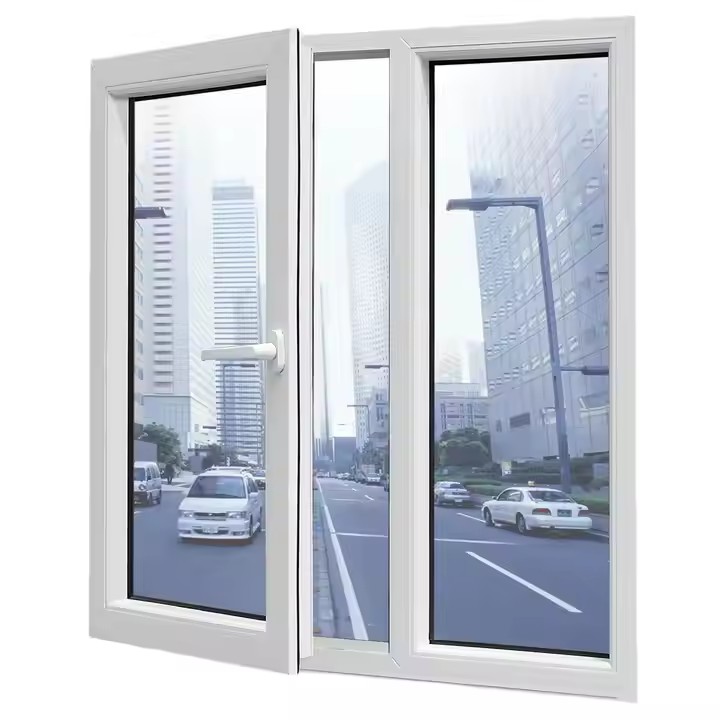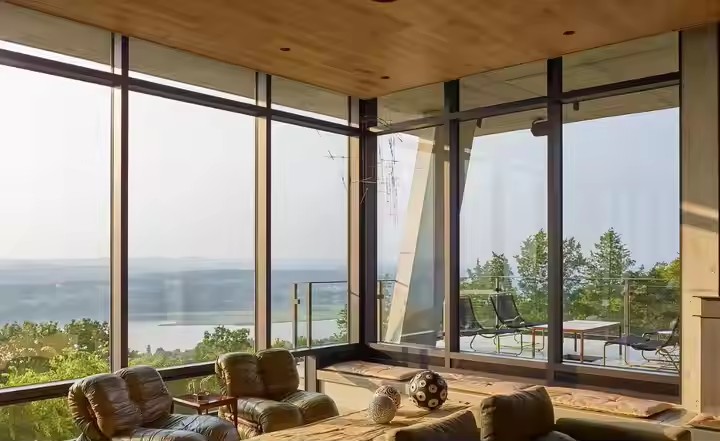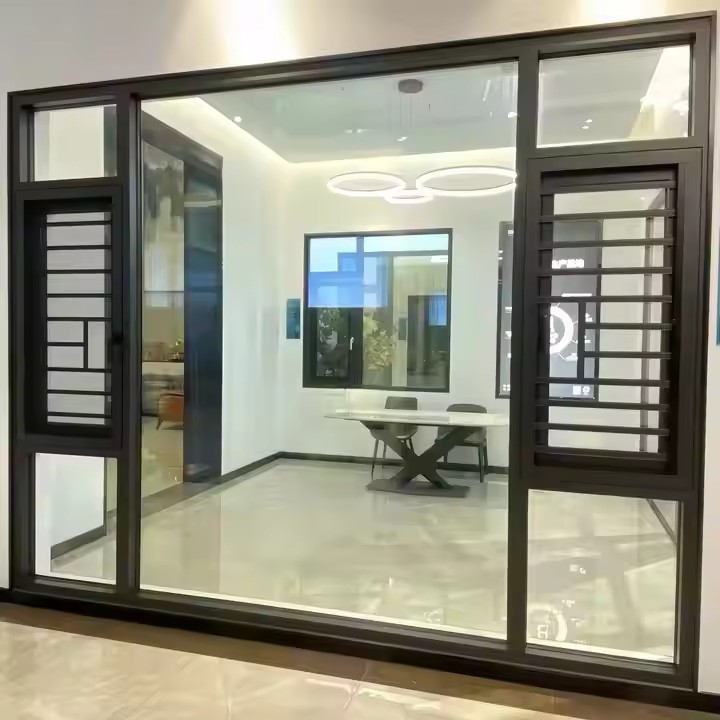I. Match Swing Door Design to the Villa Style (Core Strategy)
Different villa styles have distinct aesthetic expectations for swing doors. To achieve harmony, avoid “stylistic dissonance” (for example, pairing a minimalist aluminum-frame door with a French-style villa). The matching logic is as follows:
- French / Neo-Classical Villas: Emphasize Elegance and Ceremony
The essence of French and neo-classical villas lies in symmetry, ornamentation, and linear refinement. Swing door design should extend this sense of romance and dignity—commonly used for the main entrance, doors from the living room to the garden, or bedroom doors.
Material Selection:
Main Entrance Door: Prefer solid wood composite doors (oak or walnut surface, with a soundproof inner core) or cast aluminum doors with simulated wood grain, which balance security with texture. Avoid cold-looking all-steel doors.
Interior / Garden Doors: Combine with glass swing doors. Recommended glass types include frosted, reeded (fluted), or tempered glass with French grid patterns—ensuring privacy while allowing light through.
Design Details:
Frame & Door Leaf: Apply molding or edge-line treatments (e.g., 5–8 cm wide solid wood trim outlining the leaf, or arched / pointed tops echoing the curve of French-style window frames).

Carving Details: Embed shallow relief carvings (such as acanthus or scroll motifs) in the center panel—refined but not cluttered. Optionally, add carved wooden pillars on both sides of the frame for a ceremonial effect.
Color Palette:
Main tones: ivory white, cream beige, or light gray (for light-toned French exteriors), or deep walnut and espresso brown (for dark neo-classical interiors).
Contrast details: Choose brass or antique bronze handles to echo chandeliers and wall sconces, adding a sense of luxury.
Hardware: Opt for carved brass handles (spherical or elongated vintage styles) and concealed hydraulic hinges to preserve clean lines.
- American / Tuscan Villas: Highlight Natural Heaviness and Warmth
American country and Tuscan villas emphasize natural textures, rustic craftsmanship, and warmth. Swing doors should express the tactile beauty of solid wood and handmade details—often used for the main entrance, side garage doors, or courtyard entrances.
Material Selection:
Prioritize solid wood doors (oak, cherry, or maple), preserving the natural grain (e.g., oak’s mountain patterns). Consider a distressed finish—lightly sanding edges to expose the base color and simulate aged charm.
Outdoor Doors (Courtyard): Combine anti-corrosion wood with wrought iron (solid wood bottom panel + wrought iron upper panel) for both ventilation and aesthetics.
Design Details:
Door Leaf: Avoid excessive carving—use simple lines and panel division (e.g., 3–4 rectangular sections separated by wooden strips). You can embed circular or square iron ornaments (like stars, leaves, or vines) for character.
Frame: Use a thick frame design (8–12 cm width) to match the villa’s thick walls and large windows, avoiding the lightweight look of narrow frames. The frame can include decorative reinforcement for durability.
Color Palette:
Main tones: dark walnut, reddish brown, or beige—close to natural wood and earth hues. You may use tone-on-tone contrasts (e.g., dark walnut frame + light walnut panels).
Hardware: Choose matte black wrought iron or antique bronze handles, harmonizing with rustic chandeliers and metal furniture. The color scheme should align with the villa’s overall tone to convey taste and lifestyle quality.
- Modern Minimalist / Wabi-Sabi Villas: Pursue Boundless Transparency
The essence of modern minimalist and wabi-sabi villas is simplicity, light, and continuity. Swing doors should minimize visual interruption and enhance spatial unity—ideal between living and dining rooms, bedrooms, and terraces.

Material Selection:
Door Leaf: Use ultra-slim aluminum frames (1.6–3 cm) combined with glass. Choose ultra-clear reeded, frosted, or transparent glass—depending on the desired light and privacy balance.
Interior Doors (e.g., bedrooms): Select paint-free solid wood doors in soft hues (light gray or off-white), with full-height “floor-to-ceiling” designs (2.4–2.8 m tall) to align with villa ceiling height.
Design Details:
Handle-Free Design: Use concealed side-edge grips or push-to-open magnetic locks, completely eliminating visible hardware for a seamless effect.
Full-Height Door: Align the top edge of the door with the ceiling (2–3 mm gap) and leave a 5 mm bottom clearance for easy cleaning and sound insulation—visually extending vertical space.
Double Swing Door: For doors leading from the dining area to a terrace, use ultra-narrow aluminum double swing doors (each panel 80–100 cm wide). When open, they align flush with the wall, achieving an indoor–outdoor “boundary-free” transition.
Color Palette:
Main tones: light gray, off-white, and natural wood, consistent or nearly identical to wall and floor colors. For instance, if walls are cream-white, choose doors of the same color to form a seamless, integrated visual effect.

